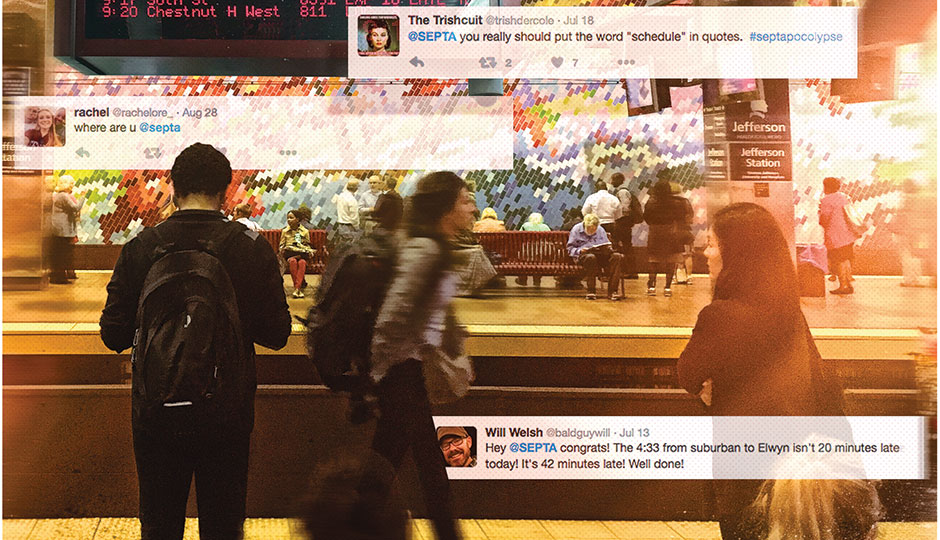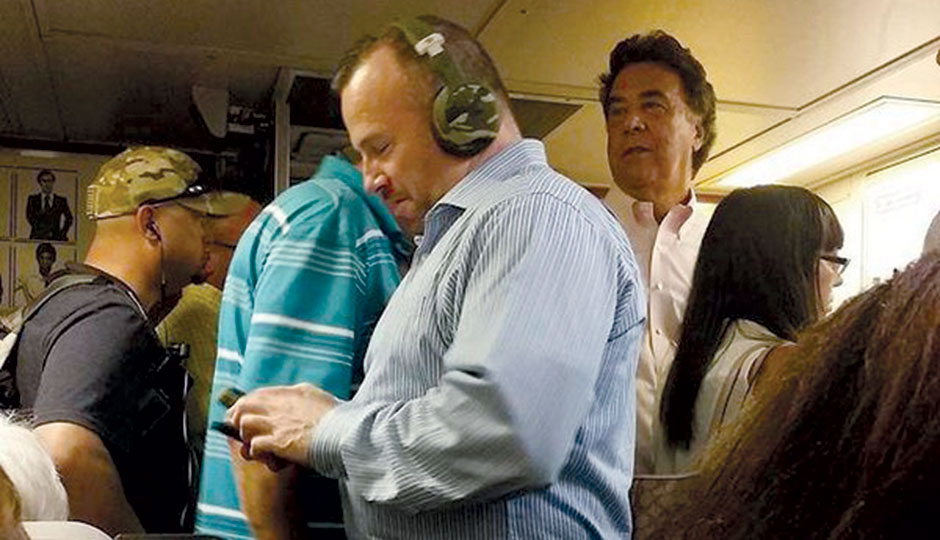Can SEPTA Win Back Rail Riders After a Season of Extreme Discontent?

Illustration by Gluekit
Regional Rail service is finally back to normal on SEPTA. That means we can all go back to what we were doing before 30 percent of the railroad fleet got yanked off the tracks, right?
No. Not really. There’s not much else that’s normal about the state of Regional Rail service today. And that continues to affect how the riding public views the transit agency Philadelphians hate to love.
Even before a SEPTA inspector found a cracked equalizer beam on a Silverliner V over the July 4th weekend, Regional Rail was choking on its own success: Ridership steadily increased over five years, and Harrisburg finally came through with steady capital funding that was badly needed. But a growing manpower shortage combined with catching up on a maintenance backlog meant that metropolitan rail service was becoming increasingly unreliable, and riders were making their feelings known.
The loss of all 120 Silverliner V cars and resultant schedule cutbacks brought those feelings to a boil. Riders abandoned Regional Rail in droves: The latest figures SEPTA has released, for ridership in July and August, show a roughly 15 percent decrease over that timespan. That, in turn, blew a $7 million hole in passenger revenue. The cost of leasing trains from other transit systems — $1,108,000 — dug the hole even deeper.
And though Regional Rail is now back to normal, “normal” isn’t what it used to be. A recent Inquirer analysis of pre-crisis operations found that SEPTA’s on-time performance this year has been below its 90 percent target (even after rebounding from last year’s 83 percent low); more than 1,200 trains were canceled last year.
All of this is fodder for critics who dismiss some very real progress SEPTA made on the operations and maintenance side that earned it a national award in 2012 and saw the long-awaited launch of SEPTA Key. Who cares, when you can’t be sure you’ll get where you’re going when you expect to get there?
General manager Jeff Knueppel says the agency is working on the manpower shortages that have led to the wave of late and canceled trains. It launched a hiring blitz to replace retired engineers and changed its rules so new ones can be trained faster. “We have 25 engineers in training,” says Knueppel. “This is something I’ve never seen before in my career at SEPTA.”
The agency has also put a Regional Rail veteran in charge of the Railroad Division, splitting it off from the subway-elevated operation. This should address a longstanding complaint among railroad personnel that those in charge were “bus people” who didn’t know anything about running trains.
That should help in the long run, but things may not get better fast enough. The crisis has led SEPTA to put on hold plans to purchase new bi-level Regional Rail passenger cars; Knueppel says the agency is changing the bid specifications in light of what it learned from the Silverliner mess. What’s not yet clear, he says, is how much needs to be changed and how long the agency can afford to hold off on procurement.

A crowded R5 Paoli/Thorndale train | Photo courtesy of Sabrina Vourvoulias
That could further hinder the recovery, which Knueppel acknowledges may not be garden-variety. “Usually our riders bounce back from fare increases, strikes and similar disruptions, but we don’t want to take that for granted,” he says. “We’re going to work hard to make sure they want to come back.”
Matthew Mitchell, vice president and chair of the commuter rail committee at the Delaware Valley Association of Railroad Passengers, says the upward trend in ridership may speed recovery. “It usually takes two to three years for ridership losses to be made up,” he notes. “That will shade a little sooner” thanks to the overall trend.
But some riders have figured out how to get where they’re going just as quickly on other SEPTA services. One Mount Airy resident posted to an online forum that he could get home 10 to 15 minutes quicker riding the subway and bus — and more frequent service made transit a better choice, too. “There were times on the Regional Rail I was over an hour late due to trains canceled with zero notification, and I was 15 to 20-plus minutes late a disturbing amount of the time,” the rider wrote.
At least those riders are still taking SEPTA. Those without such options will probably prove harder to lure back. And while management promises to do everything it can to regain their business, as with much about SEPTA these days, it will all be a waiting game.
Published as “The Silverliners and the Damage Done” in the November 2016 issue of Philadelphia magazine.


